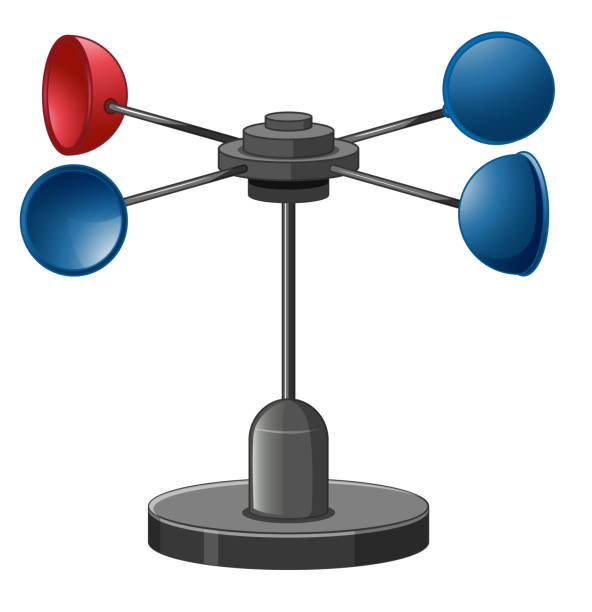Recognizing Various Sorts Of Anemometers for Numerous Applications
Recognizing Various Sorts Of Anemometers for Numerous Applications
Blog Article
All You Required to Understand About Anemometers: Exactly How They Work, Why They Matter, and Where to Use Them
Anemometers, though commonly overlooked in the world of scientific instruments, play a vital function in numerous fields, providing important insights into wind rate and airflow patterns. As we dive right into the ins and outs of anemometer innovation, we will reveal the inner operations of these devices, their significance, and the crucial considerations when choosing the appropriate anemometer for specific applications.

Anemometer Essentials
A necessary tool used to gauge wind speed and direction, the anemometer plays a crucial duty in meteorology and numerous industries. An anemometer typically is composed of three or four mugs that rotate in the wind, a vane that aims into the wind, and sensing units to track the motions or turnings.
There are various sorts of anemometers available, consisting of cup anemometers, vane anemometers, hot-wire anemometers, and sonic anemometers, each with its special attributes and applications. Cup anemometers are commonly utilized for standard wind rate measurements, while vane anemometers are favored for directional measurements. Hot-wire anemometers appropriate for reduced airspeeds, and sonic anemometers are excellent for high-precision measurements in research study and commercial setups. Recognizing the fundamentals of anemometers is necessary for accurate wind data collection and analysis throughout various sectors.
Principles of Anemometer Operation
Building on the foundational understanding of anemometer essentials, the concepts of anemometer operation illuminate the auto mechanics behind wind rate and instructions dimensions. Anemometers run on the concept of airflow impacting a sensor, causing it to revolve. Cup anemometers, for instance, have three or more mugs that capture the wind, causing them to spin faster as the wind rate increases. The rotation speed is after that converted right into a wind speed measurement. Vane anemometers, on the other hand, make use of a tail or a probe that aligns itself with the wind direction, providing a dimension of wind direction based on the positioning of the sensor. Hot-wire anemometers rely on a warmed cord that cools as wind overlooks it, with the price of cooling down figuring out the wind speed. Ultrasonic anemometers step wind speed and direction by assessing the moment it takes for ultrasonic signals to travel in between transducers. Recognizing these concepts is crucial for dependable and exact wind dimensions in different applications.
Relevance of Anemometers
Anemometers play an important duty in gauging wind speed and direction, offering vital information for climate projecting, climate research studies, ecological surveillance, and aeronautics operations. Meteorologists count on anemometers to collect exact wind information, aiding them comprehend weather patterns, predict tornados, and issue timely warnings to the public. Wind ranch drivers use anemometers to examine wind problems and maximize electricity production from wind generators.
Applications Across Various Industries
In the eco-friendly power sector, anemometers play a crucial function in analyzing wind problems for wind ranch placements, making sure optimum power manufacturing. Industries like construction and mining utilize anemometers to keep track of wind speeds, important for safety and security procedures, particularly when working at heights or in open-pit mines where strong winds can position risks. In agriculture, anemometers assist farmers in taking care of plant splashing by offering real-time data on wind speed to avoid drift.

Picking the Right Anemometer for Your Needs
For general purposes, a cup anemometer is suitable for measuring wind rate, while a vane anemometer check out here gives wind see this instructions information. Hot-wire anemometers are ideal for low airspeed measurements, and ultrasonic anemometers provide high accuracy and sturdiness.

Final Thought
In final thought, anemometers play a critical function in gauging wind speed and instructions throughout different markets. It is essential to think about the significance of anemometers in order to make informed choices when picking the most ideal tool for determining wind problems.
There are various types of anemometers offered, including mug anemometers, vane anemometers, hot-wire anemometers, and sonic anemometers, each with its unique features and applications. Mug anemometers are generally made use of for basic wind speed dimensions, while vane anemometers are preferred for directional dimensions. Hot-wire anemometers are appropriate for reduced airspeeds, and sonic anemometers are perfect for high-precision dimensions in research study and industrial setups.Structure on the foundational understanding of anemometer basics, the principles of anemometer procedure clarify the mechanics behind wind rate and direction measurements. For Read More Here basic functions, a mug anemometer is ideal for gauging wind speed, while a vane anemometer supplies wind direction information.
Report this page